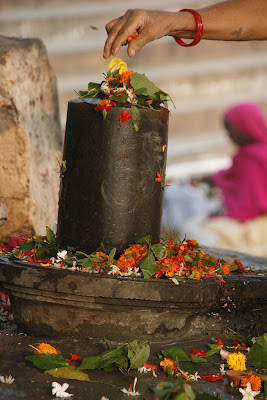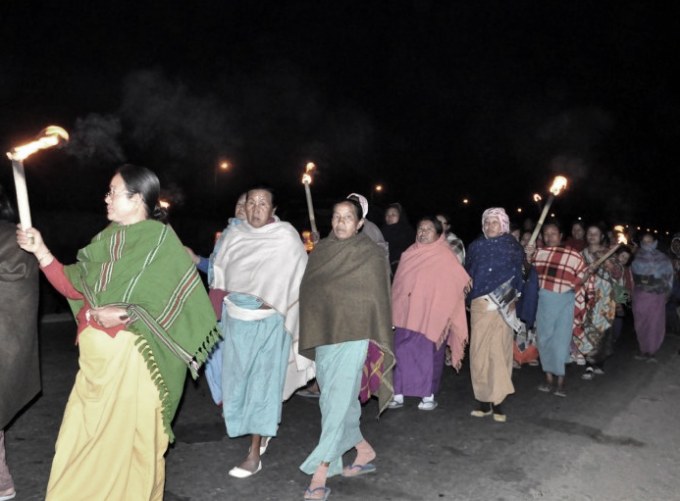The Brown Substitute for the White Raj
The Assam Rifles left the historic Kangla Fort in 2004 in the wake of a popular uprising. In the same year, AFSPA was revoked from Greater Imphal or the seven assembly constituencies. As in a natural order of filling in a vacuum, the Manipur police commandos have taken over the role of the army and paramilitary forces in the valley. What we see is just the change of uniform: from camouflage to the khaki and the cases of high-handedness and crime continue unabated.
Though professionally antagonistic, the commandos are also well complemented by the VDF, at least in spreading state terrorism. The revocation of the draconian armed forces’ act has not given a sigh of relief leave alone the sense of security. It is paradoxical for we have one of the highest concentrations of security forces in this highly militarised democratic hinterland and the least we have is the feeling of security.
Likewise, when the British left the erstwhile kingdom of Manipur after 56 years of colonisation, the Indian union represented by its bureaucrats rushed in to fill the vacuum. It was not actually a vacuum because the then kingdom-turned nation had already formed its own Constitution* and elected a democratic government. [* The kingdom had always made use of a written Constitution, known as Loyumba Sinyen, since the reign of King Loyamba (1074–1112 CE) albeit the modern version was formulated only in 1947.]
So, politically we have been observing merely a change of skin colour while we are as subjugated as before and in some aspects, even worse. For instance, AFSPA was modelled on the Armed Forces Special Powers (Ordinance) which the British created to contain the Quit India Movement in 1942. However, the Indian version is more brutal and controversial. In a more appropriate local context, the substitution is no different from a drug user, who would switch from heroin to a methamphetamine substance. S/he can never compare that one is better than the other; rather it’s just a matter of availability and affordability. But in politics, we can, and we have British India and India.
Briefly, then we became a colonial entity, now we are that of a neo-colonial. The reasons are abundant not only now but also right from day one when Manipur was coerced to merge into the Union of India. Before we consider contemporary trends that show the evidences of brown people substituting for the White Raj, we can see some a historical narrative that as well connects our past to the present.
To cite an instance, during 1891–1947 it was British India, and now from 1949 till present, it has been just India. The nomenclatural change might seem superficial but, underneath the surface lies our story in great depth and mostly unknown. One of the worst climaxes arrived in 1949 when the kingdom-nation, after an illegal merger, was reduced to a Part C State (known as a union territory today) with a chief commissioner as the head security guard.
Nowadays we have become a state or a province under the puppetry of a chief minister. And the people, they have been conditioned by the state so well. Nothing explains it better than the ongoing ‘popular’ movement for implementing a regulation like the one on Inner Line Permit System in the Imphal valley. Meanwhile, the ILPS is a product of the Bengal Eastern Frontier Regulation 1873.
For that matter, the British administration introduced concepts like excluded and partially excluded areas for the sake of administrative convenience. Similarly, eleven years after merger, the Indian administrator enforced the Manipur Land Revenue and Reforms Act only in the valley, while subsequently laying the foundation of hill-valley divide. The British had as well fine-tuned the concept of divide and rule in the subcontinent. Present-day India has not only appropriated it but also excels in it—perhaps because of the training for two centuries of colonial rule. In this appropriation and excellence, the white has turned into the brown.
No wonder then that some mainland Indians believe the British Raj was the ultimate saviour. For these people, India would have no industrial infrastructure if not for the colonialists. One of the most incredible theories is that the Muslims would have made India a Pakistan or an Afghanistan if the East India Company had not deceived or defeated the Mughals. On extreme level, it is argued that there would not have been the Indian nation. That’s plausible because, in essence, India is a product of the Muslim and British rulers; otherwise today, it could have been replaced by a land of 500 nations in South Asia. Opinion is sharply divided on whether the British Crown rule had made or marred the Indian economy but that’s not the issue at hand.
To take a different position, suppose, for meals, chefs and bakers would enlighten us on the merits and demerits of brown and white rice or brown and white bread. But when it comes to people, especially in the context of Manipur, the issue of the white and the brown has been just a bland experience. By the way, the Assam Rifles was first created as the Cachar Levy by the British masters in 1835. This is 2016; under India; and it is a force to reckon with, made up of 46 battalions.









Comments
Post a Comment